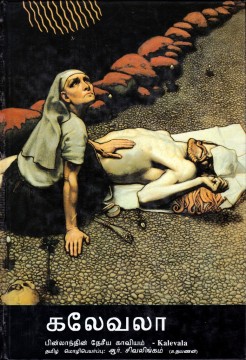Ramalingam Sivalingam 1994 and 1999
The Kalevala was first translated into the following languages that are spoken in India: Kannada or Tulu (Amrta Sõmeśvara, 1985) and Hindi (Vishnu Khare, 1990). A translation into Urdu has also been done during the last decade. The translation was made by Arshad Farooq in 2012. The first translation of the Kalevala in Tamil came out in 1994. Ramalingam Sivalingam, who is a poet from Sri Lanka, was the man behind this enormous task. His mother tongue is Tamil. Tamil is spoken by about 61 million people in the world, but in Sri Lanka, the Tamil people are both a linguistic and a political minority. The Sinhalese people hold the power in Sri Lanka.
In 1983, Ramalingam Sivalingam came to work as a researcher at the Department of Asian and African studies at the University of Helsinki. At first, he started to translate the Kalevala based on English translations, but as he learned Finnish, he was able to start using the original texts. He chose an old poetic form according to Tamil traditions, the periya eluttu-format, for his translation of the poems. He did not use the more widely known form of expression from the Mahabharata and the Ramayana. Both in his poetic translation and in his prose-Kalevala, which was published in 1999, Ramalingam Sivalingam made some cultural and political decisions. Besides the Kalevala, both versions also offered the traditional Tamil poetry and a new way to use Tamil in prose literature.
Éric Plourde: “Kalevala through Translation: Continuity, Rewriting and Appropriation of an Epic” – Meta Vol. 51, no 4, 2006. https://doi.org/10.7202/014343ar

